Olowalu Petroglyphs
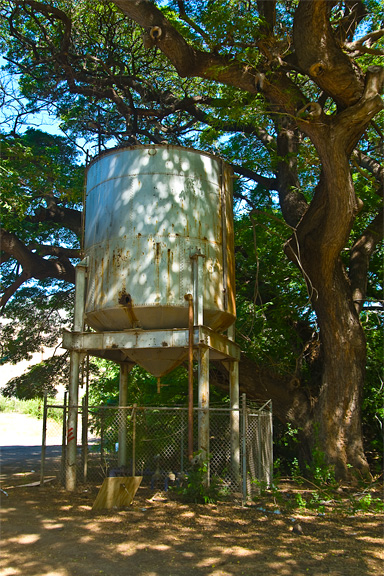 Just a few miles south of Lahaina lies the small, quiet community of Olowalu. Most visitors to Maui know it as that spot on the Pali Highway were we have to slow down approaching the Olowalu General Store and Chez Paul. According to the latest info I have, Chez Paul is now closed. 'Tis a pity — it was one of those places you see and tell yourself, "I'll have to try that some day". To exacerbate the pain of my lost opportunity, I am now learning that the French cuisine served there was quite good.
Just a few miles south of Lahaina lies the small, quiet community of Olowalu. Most visitors to Maui know it as that spot on the Pali Highway were we have to slow down approaching the Olowalu General Store and Chez Paul. According to the latest info I have, Chez Paul is now closed. 'Tis a pity — it was one of those places you see and tell yourself, "I'll have to try that some day". To exacerbate the pain of my lost opportunity, I am now learning that the French cuisine served there was quite good.
Olowalu has quite a history from ancient farming, practiced in the Ahupua`a way — through bloody encounters with the early sailors — followed by the missionaries — and subsequently the sugar plantation. Looking to their future, their community website states, "Olowalu Town will offer a wide range of housing for Maui residents, including affordable, gap-group, below market, senior, live/work, market, single family, multi-family, and rentals. Olowalu Town will help reduce traffic by being a community where residents can walk to stores, parks, schools, civic centers, and even to work. Our plans include building a new mauka Honoapi‘ilani Highway through Olowalu. Over 200 acres of parks, open space, beaches, greenways, trails, and bikeways will make Olowalu a healthy community. Public access to the shoreline for surfing, fishing, and enjoyment will be preserved and enhanced."
If you are interested in learning more about the past, present and future of Olowalu — click here.
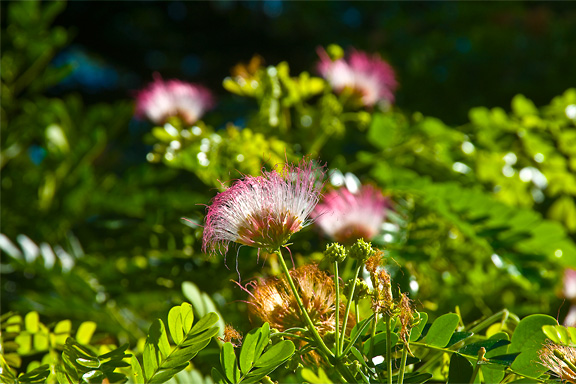 One part of Olowalu's history is evidenced by one of the best collections of petroglyphs on Maui and even all of Hawai`i. I just learned of them this trip when I purchased a book while I was on Moloka`i. It documents a number of historical sites in Maui County (which encompasses the islands of Maui, Moloka`i and Lana`i) — among them was the Olowalu petroglyphs.
One part of Olowalu's history is evidenced by one of the best collections of petroglyphs on Maui and even all of Hawai`i. I just learned of them this trip when I purchased a book while I was on Moloka`i. It documents a number of historical sites in Maui County (which encompasses the islands of Maui, Moloka`i and Lana`i) — among them was the Olowalu petroglyphs.
The book provided instructions on where to find the petroglyphs — go to Olowalu, look for the water tower and drive uphill from there. Poor instructions.
So I had to ask at the General Store — and they were quite helpful. Leave your car in their parking lot, walk to the road that runs behind the store, turn left and walk a short distance until you find the old water tower then turn right and walk about half a mile uphill. I'll add, "take water" since it can be a warm, thirsty walk.
As you may have guessed, the photo above is that old abandoned water tower. My guess is that it is a remnant of the plantation days when sugar cane covered the hills above Olowalu. The tree above the water tower is a monkey pod tree and was covered with the beautiful powder-puff flowers shown in the photo to the left.
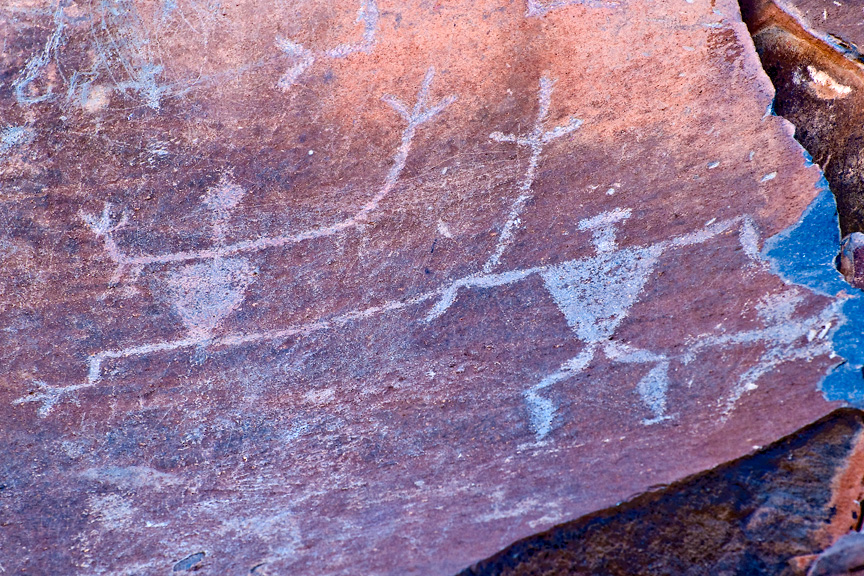 Then the hike. I was carrying my photography backpack so that I would have both lenses — plus my tripod in case I needed stability for long exposures. Just about the time I began to wonder "where are those petroglyphs?" — I spotted a huge rock outcropping that had to be the spot — and it was.
Then the hike. I was carrying my photography backpack so that I would have both lenses — plus my tripod in case I needed stability for long exposures. Just about the time I began to wonder "where are those petroglyphs?" — I spotted a huge rock outcropping that had to be the spot — and it was.
At one time, there was a stairway built up to a ledge just under the rock face where the petroglyphs are found. The stairway is gone — my speculation is that it was removed because it made it too easy for miscreants to deface these rock images.
The photo to the right is typical of the Olowalu petroglyphs. The outer oxidized layer of rock was chipped away revealing a different shade of rock beneath. The figures are obviously human although not as anatomically correct as is normally depicted in Western art.
However, you may notice in the upper left-hand corner the work of a defacer. Such a pity to have ancient artwork survive for so many years only to have someone attempt to ruin it.
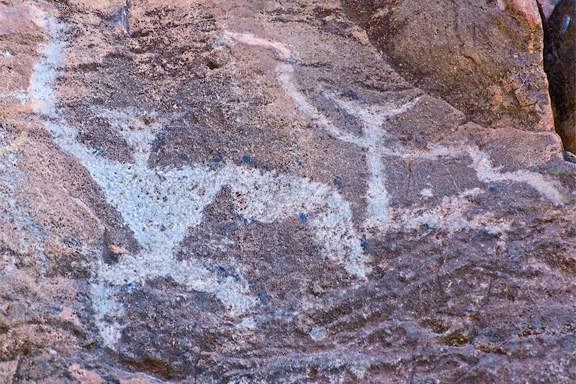 Some of the figures are hard to identify. Is the figure on the right an adult, a child or a space alien? Erich von Däniken would have a ball with that last theory.
Some of the figures are hard to identify. Is the figure on the right an adult, a child or a space alien? Erich von Däniken would have a ball with that last theory.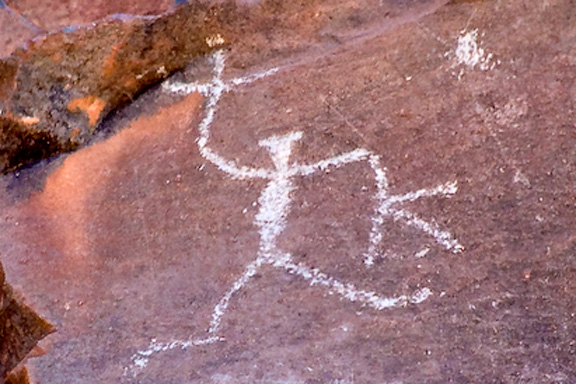 I thought this one was interesting because of the long thin extremities with three very long fingers on each hand. There is a blotch in the upper right hand corner — the sun, perhaps?
I thought this one was interesting because of the long thin extremities with three very long fingers on each hand. There is a blotch in the upper right hand corner — the sun, perhaps?
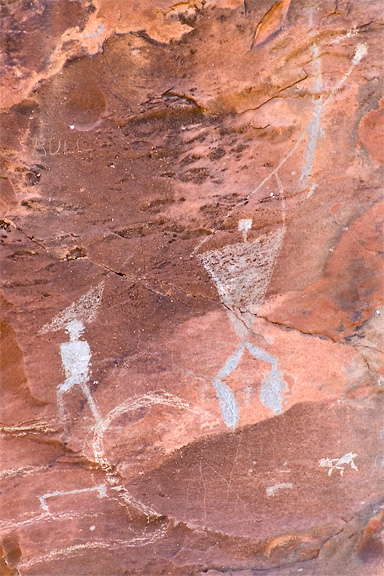
 This image on the left is really open to interpretation. It reminds me of the legend of the demigod Maui, who lassoed the sun and made it move slower in the sky so his mother's kapa (bark cloth) could dry during a longer day. I also noticed a small animal in the lower right-hand corner — maybe a dog?
This image on the left is really open to interpretation. It reminds me of the legend of the demigod Maui, who lassoed the sun and made it move slower in the sky so his mother's kapa (bark cloth) could dry during a longer day. I also noticed a small animal in the lower right-hand corner — maybe a dog?
And how about this man to the right. I guess the ancient ones did get some parts of the anatomy right.
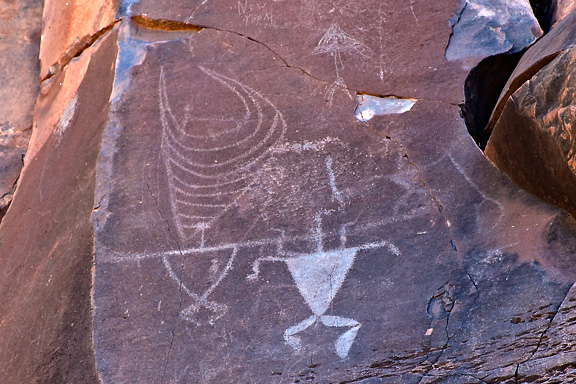 In this petroglyph, we see the shape of the sail used on Hawai`i ocean-going canoes. If you look carefully along the horizontal line at the base of the sail, following all the way to the right, you will see the faint image of the oarsman and his steering oar.
In this petroglyph, we see the shape of the sail used on Hawai`i ocean-going canoes. If you look carefully along the horizontal line at the base of the sail, following all the way to the right, you will see the faint image of the oarsman and his steering oar.
Did later artists then add the two guys in front of the boat? Or is there a connection between the two sets of images? Who knows?
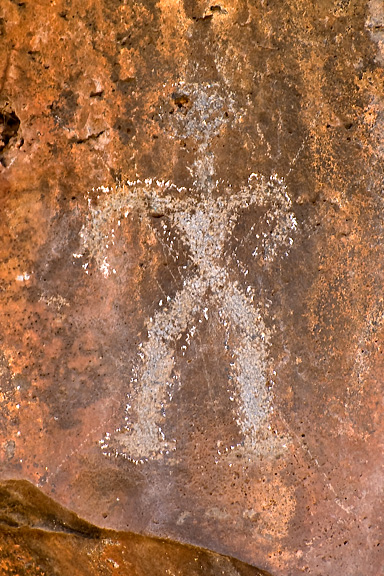
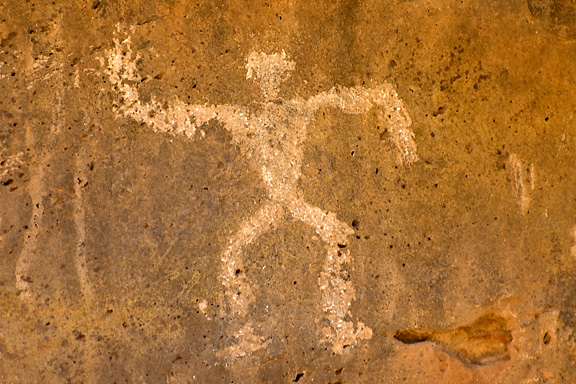 Two more — but I really wonder if these are ancient or just modern graffiti in a similar style as the petroglyphs. The one on the left did not appear to have been completed but maybe a quick attempt. The one on the right is too anatomically correct. Additionally, they were in a different area of the rock face from most of the petroglyph. For these reasons, I am skeptical.
Two more — but I really wonder if these are ancient or just modern graffiti in a similar style as the petroglyphs. The one on the left did not appear to have been completed but maybe a quick attempt. The one on the right is too anatomically correct. Additionally, they were in a different area of the rock face from most of the petroglyph. For these reasons, I am skeptical.
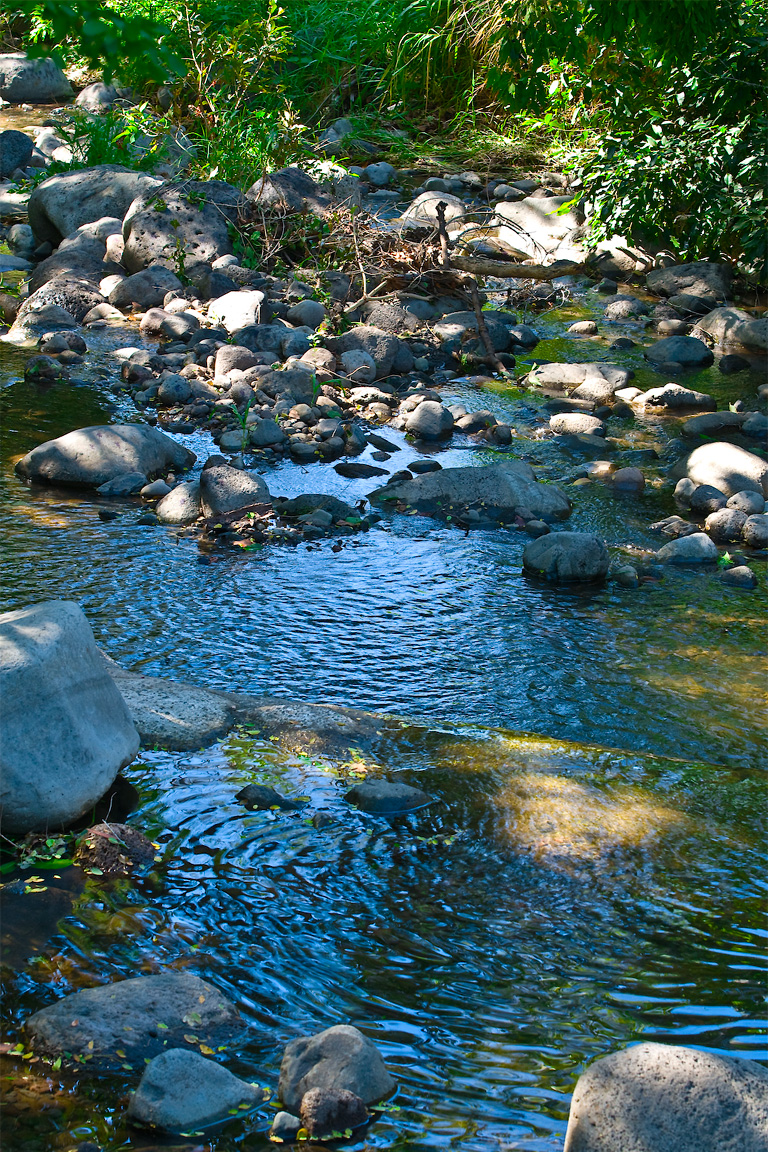 After a hot, dusty walk to the petroglyphs, I spotted a small creek just up the road. I walked up to the bridge which spans the creek just to relax and cool off. It also gave me a quiet moment to reflect on other petroglyphs that I have seen previously.
After a hot, dusty walk to the petroglyphs, I spotted a small creek just up the road. I walked up to the bridge which spans the creek just to relax and cool off. It also gave me a quiet moment to reflect on other petroglyphs that I have seen previously.
One of the best collections is found on the Big Island and are part of my photography website — click here. Another special one, I encountered on my hike to the waterfall on Moloka`i — click here. Even in Phoenix, one can find them — click here.
I hope that at some point you can personally see these messages from the past — but please look but don't touch and especially, don't deface.